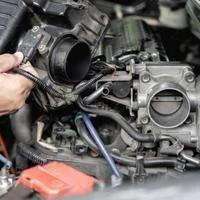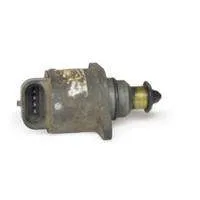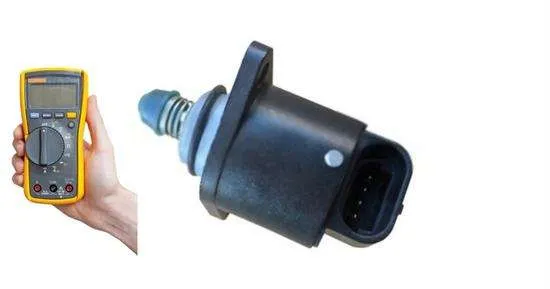An IAC valve (idle air control valve) is an essential component that intakes air to make the fuel mixture used when your vehicle is idling. A faulty IAC valve makes your car vibrate with unstable and irregular force.
So it’s necessary to inspect and evaluate the IAC valve when your vehicle performs well while idling. We can use a readily available multimeter to test an idle air control valve.
Carbureted engines were utilized in motor vehicles before the development of electronically controlled engines; hence, while your automobile was idle, you had to add rpm to the accelerator to warm it up.
By raising the revs, the throttle plate is essentially slightly opened. Air would be able to flow to the engine as a result. There were two screws on older carbureted engines. Warm screws and hot screws were the terms used to describe them. As soon as the engine was turned on and the vehicle was idle, the flap would open in the cold screw position.
The automobile could then idle without needing to be revved up since it would idle until it was hot enough to go to the hot screw position. This poses a challenge since, as you might expect, a carbureted engine couldn’t be used to idle an automobile until it was fully warmed up.
The IAC and the engine with electronic control then entered. To address this issue, the throttle plate’s butterfly valve was closed while the car was idling, allowing air to flow through the IAC and keep the engine running. It’s also quite intriguing how the IAC regulates airflow while the automobile is slowing down.
First, understand the basic functioning of an IAC valve, as it’ll help you identify the fault and troubleshoot it.
Table of Contents
ToggleHow the idle air control valve works
An idle air control valve monitors and controls the amount of air needed by your vehicle in the idle position. An air control valve is installed at the throttle body and is connected to the ECU.
A throttle valve is also used for air intake to make air and fuel mixture to run a car. When we press the accelerator, the throttle valve opens and intakes air according to the pressure on the accelerator and the signals sent by the ECU.
When the vehicle is in an idle position, the throttle valve shut’s as there is no air intake required to burn the air-fuel mixture for running. In this situation, the IAC valve opens and closes to intake air needed for the fuel mixture required in the car idling.
However, at this time, when the car is in idle mode, an idle air control valve opens and intake air for smooth idling.
Wires from the IAC valve connector are joined to the pins in the powertrain control module (PCM/car brain), which operates all information received from different sensors and devices. The idle speed should be consistent.
Examine the IAC’s performance by turning it off
The intake manifold of most contemporary automobiles has a tiny, spherical valve known as the IAC valve. It functions much like a bypass valve, allowing air to circulate through the engine when necessary but preventing it from returning to the intake manifold when not.
Ensures that air always moves through the engine rather than merely sitting still while waiting for the correct fuel and ignition conditions.
The amount of air permitted to enter through each cylinder when the engine is idle is controlled by the IAC valve.
When certain cylinders are bypassed while others aren’t, greater power is produced at lower RPMs, and fuel efficiency is improved compared to when all the cylinders are bypassed at once.
However, if excessive bypassing happens or excessive bypassing happens under typical driving conditions (as in this instance), your engine may become unstable and challenging to start or operate. You could also notice that your engine feels rough while accelerating quickly or operating at lower RPMs than usual (which would indicate too much bypassing).
Sign of a bad idle air control valve:
If the idle air control valve is faulty:
- The vehicle vibrates and requires variable acceleration for running.
- RPM surges and decreases.
- The valve gets clogged due to carbon dioxide residues (wastes).
- If the idle air control valve is stuck open, it results in a rich air-fuel ratio that results in high speed at idling and shaking the vehicle (variable force).
- If the idle air control valve is stuck closed, air can’t bypass the valve for combustion resulting in low idle and ultimately stalling your vehicles.
- At the start, your vehicle will stall eventually, but the situation can lead to stalling instantly after cranking (starting engine).
How to test idle air control (IAC) valve with multimeter?
Locate the IAC valve and visually inspect for damage.
Disconnect the IAC valve plug (connector).
- Set your multimeter to DC voltage and check the voltage of the IAC valve connector (coming through PCM).
- Now check the resistance in the solenoid terminals of the IAC valve.
- IAC valve at -13°C to 50°C can have 17-25 ohm resistance, and at 50-100°C, resistance can range from 21.5-29.5 ohms.
- Also, check RPM while the IAC valve is installed and after removing it. If the RPM remains the same before and after removing the IAC valve, then the valve is faulty because the idle air control valve affects idle RPMs.
Step1: Locate the IAC valve
The IAC valve is located near the throttle plate on the throttle body. Installation location can vary depending on the model. Check the car manufacturer’s manual to find the IAC valve. Remove the connector from the IAC volva solenoid to disconnect it from the engine.
Inspect the valve for dust and carbon residues that can block the valve from opening and closing. Clean the valve thoroughly. Reinstall the IAC valve in the throttle (engine) and check whether the vehicle starts functioning correctly. If your car still has improper idle, remove the IAC valve to test the voltage supply and resistance in the valve.
Step 2: Set your Multimeter
Remove the IAC valve plug from the connector.
Set your multimeter to DC voltage at 20V range to check the input voltage of the IAC valve from the connector.
Step 3: Test Voltage
Attach the black probe to a ground point in your car. It could be any grounded bolt or metal body part.
Connect the red probes to the +ve terminal (battery) in the connector, which supplies power to the IAC valve.
The power supply () should be around 12V, and the signal voltage can range from 1-12V.
If there are irregular issues in the voltage supply, then the IAC valve connector or ECU wiring is faulty.
Step 4: Test Resistance
Now we’ll test the resistance in the IAC valve.
Set your multimeter to resistance (ohms) at 200Ω.
Place both multimeter probes at the IAC valve solenoid terminals. Consult the manufacturer’s manual to check your IAC valve model diagram to identify the terminals.
When the temperature is 50-100°C, your Idle air control valve should have around 21.5 Ohms to 29.5 ohms.
However, if the temperature ranges from -13°C to 50°C, a fine IAC valve should have 17-25 resistance.
However, resistance ranges can vary in different models. If the multimeter reads OL (open loop) or relatively high or low resistance, then the ideal range, then the IAC valve is faulty.
Step 5: Test the idle RPM with and without the IAC valve
Usually, the idle RPM lies between 500-100. Make sure that the IAC valve is plugged into the engine. Switch on the engine and wait for the RPM to get stable.
At the idle position, most cars’ engine RPM ranges from 500-1000, depending on their speed.
Now turn off the engine, locate the IAC valve and remove its solenoid connector. Obliterate the IAC valve from the engine and start your vehicle again without the IAC valve.
If your IAC valve is fine, you can expect a difference in RPM at the idle position while the IAC valve is installed and removed.
If the RPM remains the same with and without the IAC valve, the valve is malfunctioning or completely faulty. Because the vehicle RPM doesn’t change with and without the IAC valve, the IAC is not functioning.
Step 6: Test for short circuits in the IAC valve body and circuit
We can check the short circuit in the IAC valve by testing continuity in the metal body parts and the circuit wiring and terminals.
Set your multimeter to continuity, and attach one probe to metal parts of the IAC valve and the other probe to all terminals in the connector, one by one. The outer metal body parts are non-circuitry (non-electric) parts of the IAC, and there should be no continuity in the terminals and the metal body.
How to clean the idle air control valve?
Excessive carbon build-up looks like a black and silver rough surface. This dust and carbon residue jams the throttle valve, and you feel a sticky pedal while pressing the accelerator. Despite the throttle valve, carbon build-up also clogs the IAC valve (shut or open), and as a result, your vehicle has trouble taking in the air required for idling.
Also, unscrew the air filter box, remove the cover, and check if the filter is clogged with carbon. A clogged filter can also affect the air intake of the throttle and idle air valve.
Use a throttle body cleaner to remove residues from the valves (throttle and IAC). Spray the cleaner on a piece of cloth and the throttle valve plate. Rub the throttle valve plate and lips (round ends) until the valve plate is clear (shiny).
Unscrew the IAC valve from the throttle. Use a plastic brush to remove dust from the IAC valve and clean it thoroughly with the cleaner.
Conclusion
Testing an idle air control valve is relatively easy if you are aware of using a multimeter and locating components in the car.
Locate the IAC valve on the throttle body, check the terminals with the circuit diagram of your specific models, and test voltage resistance in the IAC valve terminal according to the complete guide above.
If you still have queries about testing the IAC valve, ask us in the comments below.
Related Guides:






